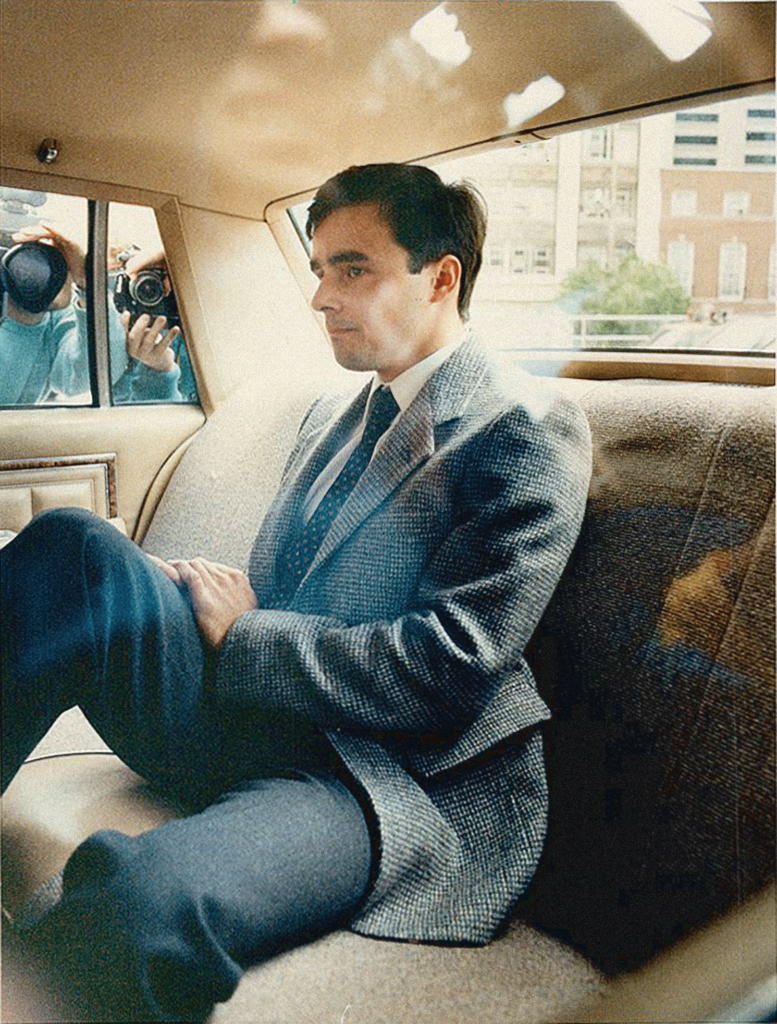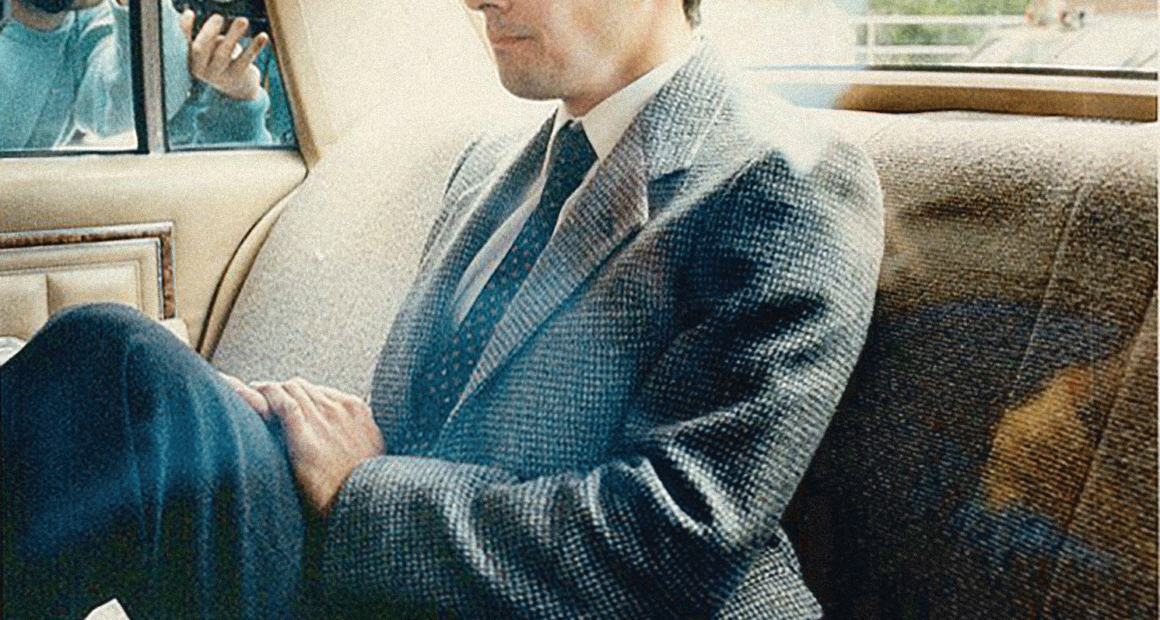Wrongful conviction reporting used to be a staple beat for papers. Now it’s all but disappeared.

Mendleson first heard about Motherisk in the fall of 2014. The then Toronto Star general assignment reporter had a rare break between stories and stepped out to meet a lawyer for lunch. “I was hoping to cultivate [him] as a source,” Mendleson recalls. “Which is not a thing we normally have time to do.” She never expected that the conversation would change her life.
During their chat, the lawyer offhandedly mentioned a name: Tamara Broomfield. Broomfield had been sentenced to seven years in prison back in 2009 after Motherisk, a clinical and research program at Toronto’s SickKids Hospital, reported that she was feeding her baby doses of cocaine. Some branded her as Toronto’s “crack mom.” But the conviction, the lawyer explained, had just been overturned. The court of appeal ordered a new trial on the grounds that the results from the medical testing central to the Crown’s case conflicted with new evidence. Mendleson was intrigued—it seemed like a story worth exploring.
The Motherisk Drug Testing Laboratory began drug and alcohol testing in the late 1980s and was often called upon to analyze evidence in child protection and criminal proceedings. For more than two decades, Motherisk performed hair-strand drug and alcohol tests on at least 25,000 people across Canada, influencing decisions in child protection cases that separated parents from their children, and submitted evidence in at least eight criminal cases. The flawed system, in which Motherisk scientists had been operating without oversight and not meeting forensic standards, only came to light thanks to Broomfield’s appeal. “The court of appeal—they weren’t fully saying Motherisk’s evidence wasn’t good. What they were saying, though, was we’re not sure,” said Mendleson. “And I felt like that was worth a news story.”
Mendleson began sifting through complicated court documents and speaking with experts. She published over 60 stories on the growing Motherisk scandal, reporting on the results of two government-led inquiries that concluded the program had misled the public and unfairly broken families apart. “I reported the hell out of the Motherisk story,” she recalls.
A few years later, Mendleson was browsing through EMMA, the Star’s archival system, and found a surprising detail: concerns about Motherisk weren’t new—in fact, a court in Colorado had called the lab’s evidence into question as far back as 1993.
The details in the transcripts were vague. “It didn’t say ‘Motherisk,’ it didn’t say ‘SickKids.’ It just said that hair-testing evidence wasn’t admitted,” Mendleson explains. She called the defence attorney, who, thankfully, was still practising, and made some enquiries: “Hey, this is out of the blue, but do you remember where this hair-testing evidence is from?” It was Motherisk. “[The lab] had been told, essentially, that their evidence was not up to snuff. And they kept doing it,” Mendleson says.
The Motherisk researcher who testified in the Colorado case was Julia Klein, then lab manager. Mendleson started wondering if Klein had testified in any other cases where Motherisk wasn’t directly named, and she began searching old newspaper articles. That’s when she came across the conviction of Joyce Hayman in 1998. The case seemed similar to that of Tamara Broomfield.
Hayman, like Broomfield, had been convicted of feeding her young son cocaine based on Motherisk’s evidence. Hayman served nine months in jail, followed by probation. She spent the next 20 years carrying the “criminal” label, which made it hard to find work. Hayman struggled with addiction afterward and survived on social assistance. She lost custody of her son and then custody of a second son, who was born in 2003. “Truly, as soon as I saw the stories, my blood ran cold, because it was so apparent that this evidence had been so important at the trial,” Mendleson says.
She contacted James Lockyer, a veteran wrongful conviction lawyer and the founding director of Innocence Canada. Lockyer had represented Hayman at her initial appeal, and Mendleson was eager to share the information she’d learned. He went to work, and a few months later, in 2021, Hayman’s conviction was overturned.
The Motherisk story hasn’t left Mendleson since she first picked it up. The lab shut down in April 2015, but the story continues to unfold. She is now working on a book and continues to receive emails from parents who had their children taken away based on the lab’s evidence. “We’re really lucky at the Star…it still has an investigative team,” says Mendleson. “We have the ability to spend months on something which a lot of reporters don’t have anymore.”
Wrongful convictions occur when an innocent person is either found guilty of, or pleads guilty to a crime they did not commit. They are presumed to be rare, but the trouble is, we don’t actually know how often they occur. According to a 2020 federal report, exact numbers are unknown—in part since it’s extremely difficult for the wrongfully convicted to establish their innocence. One of the best ways to bring these miscarriages of justice to light is through thorough, in-depth reporting—but in the current media landscape, these kinds of slow, arduous investigations may be becoming more and more rare.
The federal report highlights that wrongful convictions affect some groups more than others. Women, youth, and Indigenous peoples experience various forms of pressure to plead guilty. The criminal conviction review process can take several years, which makes it less useful to people who are serving shorter sentences—people in this category may simply choose to see out their sentence and move on.
With his students, Kent Roach, a University of Toronto law professor, runs the Canadian Registry of Wrongful Convictions, which documents overturned Canadian wrongful convictions. To date, they’ve identified 87 cases. “We make it very clear in the registry that we’re only measuring remedied wrongful convictions,” Roach says. “These are the tip of the iceberg.”
For Roach, the public conversations around Canada’s wrongful convictions often orbit three central cases: David Milgaard, Guy Paul Morin, and William Mullins-Johnson. The unravelling of these miscarriages of justice spanned the mid-1980s and moved well into the ’90s. Milgaard was wrongly convicted of rape and murder in 1970 and spent 23 years in prison. His conviction came down to the improper questioning of witnesses. Mullins-Johnson, meanwhile, was wrongfully convicted of sexually abusing and murdering his four-year-old niece in 1994 and spent 11 years in prison due to the faulty medical evidence of disgraced pathologist Charles Smith.
Guy Paul Morin, meanwhile, was charged with murdering Christine Jessop. At his first trial, Morin was actually acquitted. But the attorney general of Ontario launched an appeal, and a retrial was ordered. When it went back to court, unreliable witness testimony and contaminated hair and fibre samples that “matched” hair from Morin’s car, home, and Jessop’s clothing were included. Morin was found guilty and began his prison sentence.
“Most newspapers don’t have the resources to devote someone to the long slog of uncovering a wrongful conviction”
— Kent Roach
Kirk Makin, former justice reporter for The Globe and Mail and co-president of Innocence Canada, began looking closely at the case. In 1990, after publishing his first few stories on Morin, which detailed the flawed evidence used, Makin became convinced that Morin was innocent. He kept writing stories, but it seemed like there was nothing more he could do.
Then, in 1995, Makin received a call. Advances in DNA testing meant that the sample of semen on Jessop’s underwear could now be tested. Morin was working on an appeal and intended to show the unreliability of the evidence used against him. However, just before presenting these arguments to the court, the DNA test result came in. “We were going to know that night whether or not the guy was innocent,” Makin says.
He remembers lying on the floor of his office, waiting to see if the long years of work—the phone calls to lawyers and experts, the relentless questioning of people involved—had been worthwhile. Had the verdict been right all along? Had Morin really done it? Makin wondered about his next move if it all ended up going sideways. “I would have been packing my bags and looking for a job in Melbourne, Australia,” Makin says. “Humiliating, right?” Then the phone rang: the results were back, the test was negative. Morin was finally acquitted.
Makin says he was lucky to have the kind of leeway from editors and other media to develop his coverage of the Morin case. His hunt for truth brought him private success in the form of a book deal and career advancement. But his work also highlighted the need for more public accountability from the justice system. “You had a case that was evolving simultaneously on TV, radio, a book, and newspaper coverage,” Makin says. “That’s a powerful force which bureaucrats and politicians must deal with.”
This kind of attention is far more rare today. “Most newspapers don’t have the resources to devote someone to the long slog of uncovering a wrongful conviction,” said Roach in an interview with TVO. “When you go on databases, and you put in the wrongfully convicted name, you really see nothing,” he explained.
A report authored by Mira Milosevic and published by the Government of Canada called the upcoming decade a decisive one for the future of journalism. Milosevic cites the pandemic as “amplifying converging crises, including the demise of journalism’s economic model.” She writes, “Advertising revenue for newspapers globally has been in free fall since 2008, plunging from $103 billion to $49 billion in 2019.”
A 2019 article by The Tyee used data obtained from Statistics Canada to show that fewer journalists are now working for organizations and in permanent positions—only 60 to 70 percent had these kinds of stable jobs “in recent years.”
Roach says investigative reporting plays a crucial role in uncovering wrongful convictions. Lawyers representing the wrongfully convicted are often working with clients who are in jail and have no money. Those lawyers are, according to Roach, “working pro bono on Canada Innocence projects. They have no power to prosecute, no access to police or forensic experts to turn over potentially irrelevant evidence.” The Crown, meanwhile, has an unimaginable amount of time, finances, and people, all focused on putting the accused in prison. It is here where the power of the press becomes crucial. Otherwise, “It gets very difficult to remedy wrongful convictions,” says Roach.
There’s also the issue of the public thinking that wrongful convictions were something that happened in the bad old days and were isolated to a few cases like Morin, Milgaard, or Mullins-Johnson. “Those [stories] are getting really old,” Roach says. “We haven’t had a public inquiry into wrongful convictions since 2008. So there’s a whole generation growing up without recognizing that wrongful convictions happen.”
For all the good media can do in righting legal wrongs, they can also play a part in facilitating them. “The media in some ways can contribute to wrongful convictions,” says Carolyn Yule, associate professor of sociology at the University of Guelph. “It can bias juries, it can create this public perception or understanding of [the type of person] who commits crime.” According to the federal background paper, Indigenous peoples, racialized people, women, and persons with disabilities are often the demographics that dominate the statistics. “The story sort of lines up,” Yule says. “So it very much can be used to reinforce evidence that this person is guilty.”
After the media reports on the perpetrator, the conviction, and the prospective jail time, attention tends to die down. “Things go quiet until we’re much closer to thinking, Okay, maybe the courts got it wrong, but that’s usually years and years later,” Yule says. All the while, the effects of the coverage stay with the accused. “Their family members and their friends read [the news],” she says. “And so there’s a real outcasting that happens at many levels.”
This happened to Broomfield during the Motherisk conviction. She was a Black single mother, and after being deemed the “crack mom” by mainstream media, she faced relentless badgering by reporters and the public. “We have this idea in criminology,” Yule says. “The perfect victim. Like, what victims are supposed to look like. So, how does the media respond when you don’t look like that?”
Morin’s case is a good example: he was seen as the “black sheep” of the community, with a rather reclusive and combative family whose behaviour did not appeal to the public. So until the holes in his case became overwhelmingly obvious, the media wouldn’t write his story as one of an innocent man wrongfully convicted. For Yule, this dual nature of the media is important to wrestle with: the press can be useful for keeping the public eye on wrongful convictions “as long as we can do more than just feel sad for people who were wrongly convicted,” she says. “Ideally, it does more than that.”
Having the media doing more is what Roach is hoping for, too. When asked by the Star whether a lack of thorough criminal justice reporting could correlate with fewer wrongful convictions being identified and overturned, Roach says that it’s possible, as many kinds of wrongful conviction cases ultimately go unreported.
Makin says that more in-depth wrongful conviction reporting is necessary. “I always felt that it was one of the great issues in justice reporting. From the first time I ever heard the expression ‘wrongful conviction.’ I mean, how can you not, right? This, in essence, is what journalism is supposed to be about,” says Makin. “It’s righting wrongs. It’s getting to the truth.”
With fewer investigative teams and fewer resources available to dedicate to investigating potential wrongful convictions, the pressure to remedy these injustices weakens. The great pursuit of truth stops being worthwhile. We start to see cases of wrongful conviction that “go out with a whimper rather than a bang,” Roach says, which is damaging not just for the people accused, but the rest of Canada.
Mendleson, for her part, says she’s always been drawn to the ability of journalism to call out injustice and hold power to account. “You know, I can’t remember if [Hayman] explicitly thanked me, but I certainly got the sense that she was very grateful to both me and especially her lawyer,” she says. Mendleson explains that Hayman had a difficult life, and didn’t seem trusting of her. “It felt to me that she wasn’t used to people in positions of power treating her with kindness or compassion or even believing her that she was innocent of this crime.”
That’s why, for Mendleson, Hayman’s is one of the most important stories she’s ever worked on. “I definitely got emotional when the appeal court apologized to her,” she says. “The apology was so long overdue.”
About the author
Lidia is a second-year MJ student. She has interned at TVO, producing weekly segments for The Agenda with Steve Paikin. She is the Copy Editor for The Otter. She has a keen interest in unraveling socio-economic and systemic issues, and bringing a voice to those often underrepresented.






